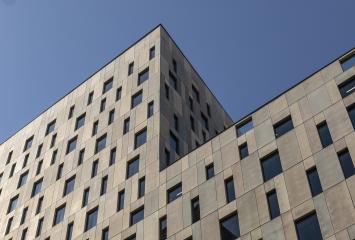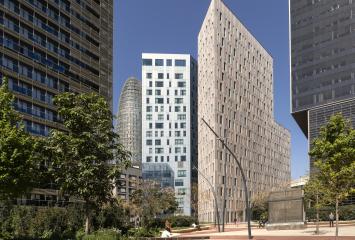Invisible Architecture: Real Integration in the Environment
Some buildings are truly beautiful architecturally, a delight for human eyes. However, they can still create a stark visual contrast with their surroundings. In this sense, the design of a building should not only consider the building itself but also its optimal integration into the ecosystem around it. Moreover, we are by no means the only species inhabiting this planet: what may be pleasant for us could be harmful to the lives of many other animals. Two key facts that require a much more ambitious perspective on architecture: the perspective of invisible architecture.
The Merit of Going Unnoticed
Over the past decades, the primary strategy for corporations to stand out from their competitors was to be more noticeable, to attract more attention, and operate from the largest and most impactful buildings possible. However, things have begun to change as we understand the importance of preserving natural and urban environments: invisible architecture proposes creating buildings and elements that, through intelligent choices of materials and strategies, stand out as little as possible in a landscape. In other words, the aim of this architectural approach is not to raise visible barriers between buildings and their surroundings.
There are many different mechanisms for achieving this, with the prominent use of translucent materials such as glass or reflective materials like mirrors. Additionally, the embrace of biophilic design, incorporating green areas, using native plants to support local wildlife, and even installing nests for insects or local birds. The idea is for the building not to become an obstacle to the natural habitat in which it is located, whether it's a rural, countryside, or urban habitat. After all, the city is also teeming with life, and architecture has the obligation to protect it.
Invisible architecture also aims to conceal technologies so that they do not interfere with the overall aesthetics of the building or the activities of surrounding animals. This is known as system integration: heating, ventilation, solar energy acquisition, and more. Finally, the use of sustainable materials that do not pollute the environment and optimal noise management to avoid disturbing wildlife is highlighted. Ultimately, no matter how visually invisible a building is, if it harms the nearby environment or creates sound disturbances affecting other living beings, it cannot be truly considered invisible.
Invisible Buildings in Real Life
There are many invisible cabins scattered around the world, from the Arcana cabins in the forests of Ontario to the cabins installed by the company Cabins of the Mountains and Clouds in the Chinese mountains of Yichang. And it makes sense: considering everything discussed earlier, invisible architecture is especially necessary in purely natural environments to ensure that animals and plants are not adversely affected by buildings. These cabins go relatively unnoticed. However, invisible architecture is not limited to small constructions; it can also be applied to large buildings.
Examples like The Spiral in New York, Copenhill in Copenhagen, Capital Spring in Singapore, The Vitali Hacko Creative Industries Library in Istanbul, or the Seattle Central Library are internationally representative of this bold and conscious architecture. Wittywood, the Colonial building in Barcelona, built exclusively with wood and glass, can also be framed as one of the first Spanish buildings inspired by invisibility. Moreover, our entire activity is imbued with sustainable, green, and invisible features to a greater or lesser extent. The goal is to continue to strive for a better world.

